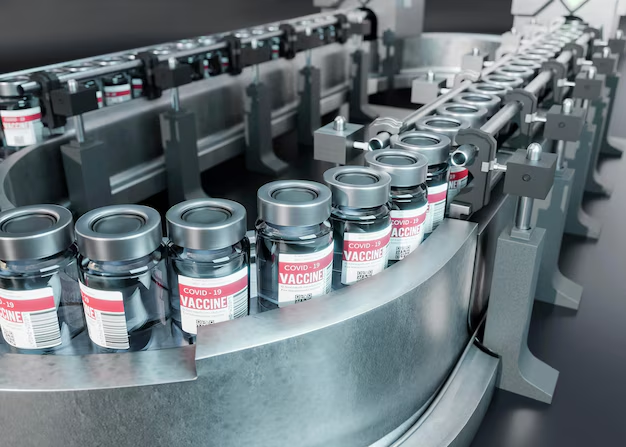Injection molding is a manufacturing process widely used for producing plastic parts in various industries. China has emerged as a global leader in injection molding, thanks to its advanced technology, skilled workforce, and cost-effective production methods. This article explores the intricacies of injection molding in China injection molding, including its benefits, applications, and the factors driving its growth.
What is Injection Molding?
Injection molding is a manufacturing process where molten plastic is injected into a mold cavity, allowed to cool and solidify, and then ejected as a finished part. This process is highly efficient and is ideal for producing complex shapes with high precision and repeatability.
The Injection Molding Process
- Material Selection: Various plastics, such as ABS, polypropylene, and polycarbonate, can be used, depending on the required properties of the final product.
- Mold Design: Molds are typically made from steel or aluminum and are designed to withstand high pressure and temperature. The mold design significantly impacts the quality and cost of the final product.
- Heating and Injection: The selected plastic material is heated until it becomes molten and is then injected into the mold using a screw or plunger mechanism.
- Cooling: The injected plastic cools and solidifies in the mold, which can take a few seconds to minutes, depending on the size and complexity of the part.
- Ejection: Once cooled, the mold opens, and the finished part is ejected. Additional processes such as trimming or finishing may be required.
Benefits of Injection Molding in China
1. Cost-Effectiveness
China offers competitive labor costs and raw material prices, making it an attractive destination for companies looking to reduce manufacturing costs. The economies of scale achieved through mass production further lower per-unit costs.
2. Advanced Technology
China has invested heavily in modernizing its manufacturing facilities with state-of-the-art injection molding machines and automation technologies. This investment enhances production efficiency and product quality.
3. Skilled Workforce
With a large pool of skilled engineers and technicians, China has a workforce that is adept at managing complex injection molding processes. This expertise leads to higher precision in manufacturing and faster turnaround times.
4. Rapid Prototyping and Production
Chinese manufacturers often use advanced software and technologies for rapid prototyping. This capability allows companies to test designs quickly and efficiently, reducing the time to market for new products.
Applications of Injection Molding
Injection molding is utilized in various sectors, including:
1. Automotive Industry
Automakers use injection molding for producing components like dashboards, interior trims, and housings. The lightweight and durable nature of plastic parts helps enhance fuel efficiency.
2. Consumer Electronics
Devices such as smartphones, tablets, and laptops contain numerous injection-molded parts, including casings and buttons, thanks to their intricate designs and precise requirements.
3. Medical Devices
The medical industry relies on injection molding for producing high-precision parts such as syringes, connectors, and housings for medical instruments, ensuring they meet stringent quality standards.
4. Household Products
From kitchen utensils to storage containers, injection molding is commonly used to manufacture a wide range of household items, benefiting from the process’s versatility and efficiency.
Challenges Faced by the Injection Molding Industry in China
While the injection molding industry in China is thriving, it also faces several challenges:
1. Environmental Regulations
As environmental concerns rise, stricter regulations regarding plastic manufacturing and waste disposal are being enforced. Companies must invest in sustainable practices and eco-friendly materials.
2. Quality Control
Maintaining high-quality standards can be challenging, especially when dealing with large-scale production. Manufacturers need to implement rigorous quality control processes to ensure product consistency.
3. Intellectual Property Concerns
With the growing competition, protecting intellectual property rights has become crucial. Companies must be vigilant in safeguarding their designs and technologies from potential infringements.
Future of Injection Molding in China
The future of injection molding in China looks promising, with several trends influencing its growth:
1. Automation and AI Integration
The integration of automation and artificial intelligence in the injection molding process is expected to enhance efficiency and reduce labor costs. Smart factories will become more prevalent, leveraging data analytics for optimized production.
2. Sustainable Practices
As environmental awareness increases, the demand for sustainable materials and eco-friendly manufacturing processes will shape the industry. Companies will need to adapt by investing in bioplastics and recycling technologies.
3. Expanding Markets
Emerging markets in Asia, Africa, and South America are driving demand for injection-molded products. Chinese manufacturers are well-positioned to tap into these markets, further solidifying their global presence.
Conclusion
China’s injection molding industry plays a crucial role in the global manufacturing landscape. With its cost-effective production, advanced technology, and skilled workforce, the country continues to lead in this sector. As challenges arise and new trends emerge, manufacturers must adapt to maintain their competitive edge. The future of injection molding in China is bright, with opportunities for innovation and growth on the horizon.





Leave a Reply